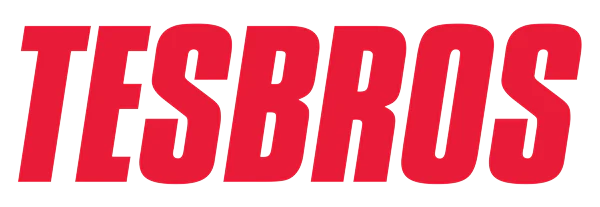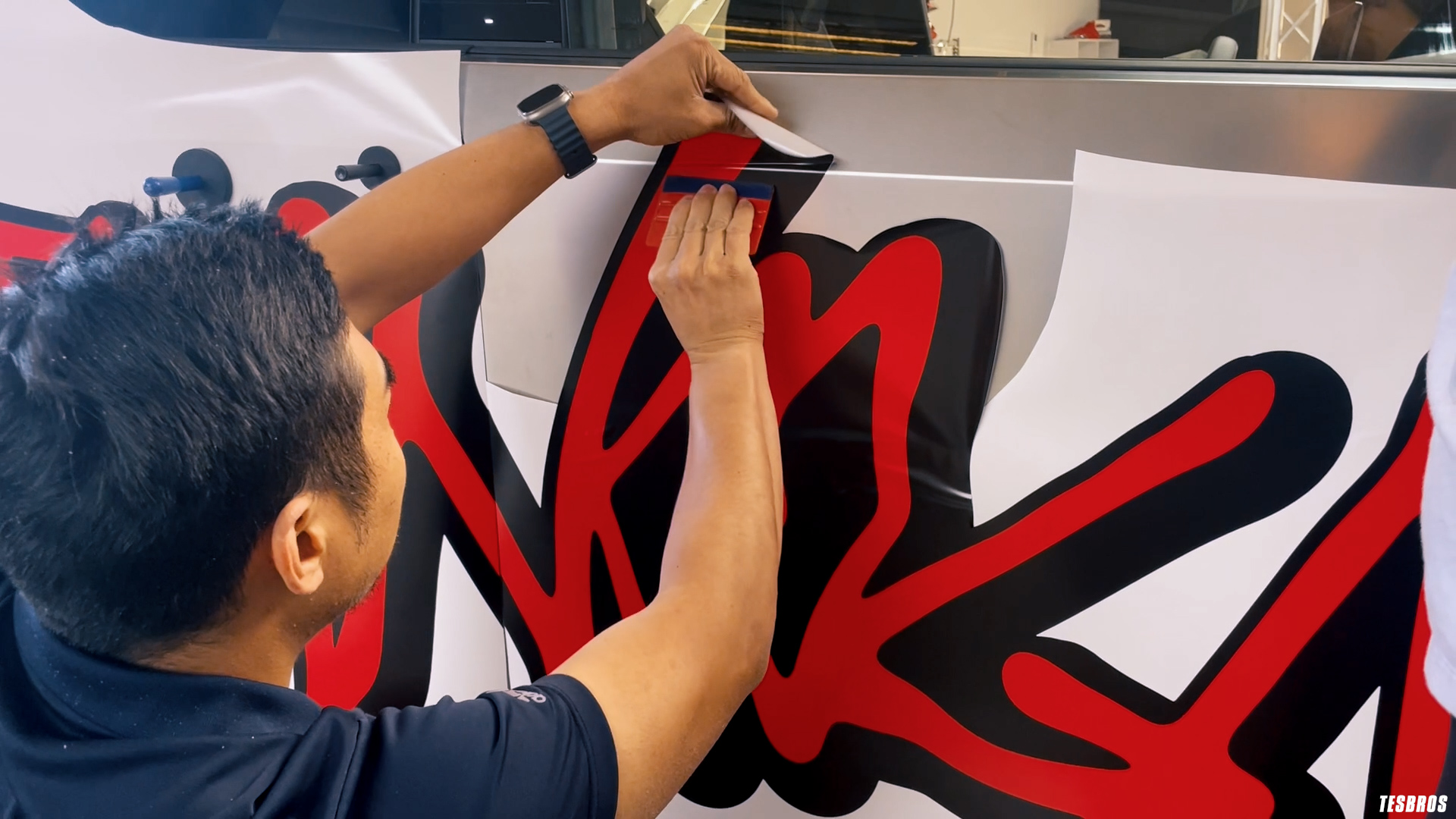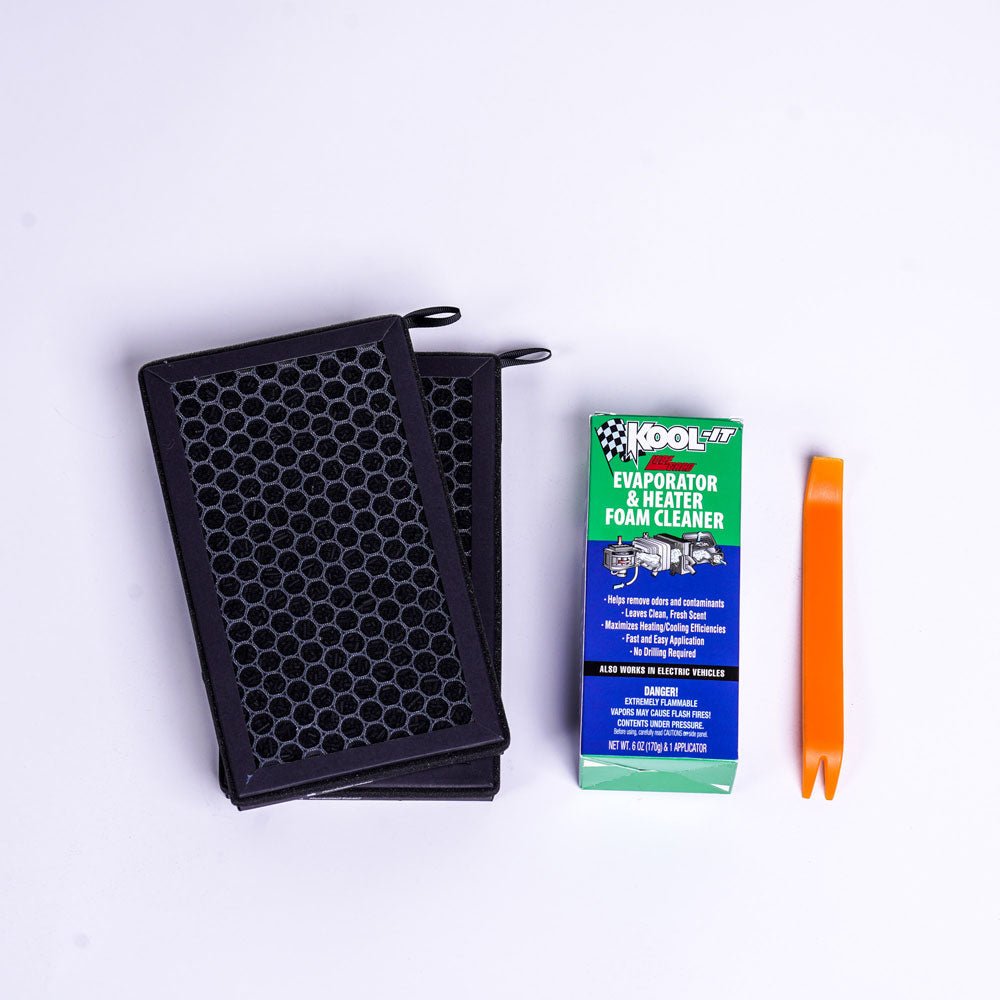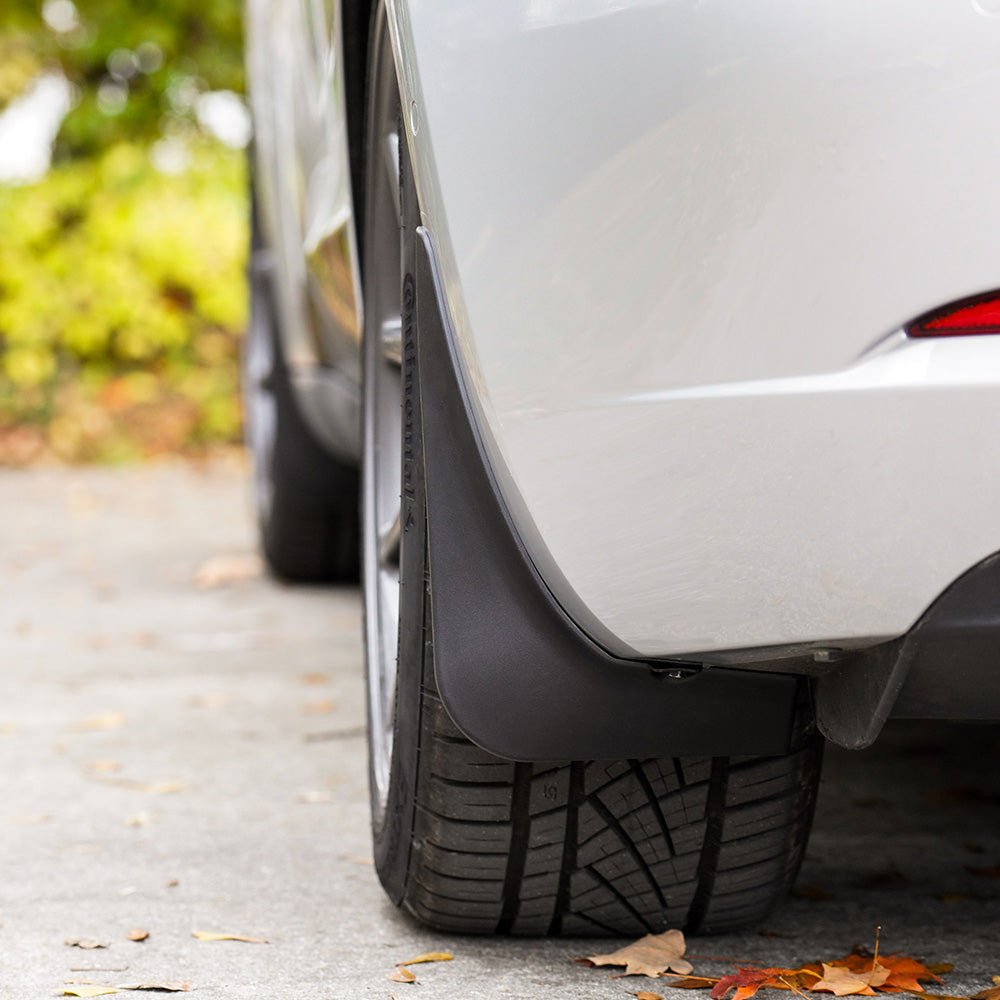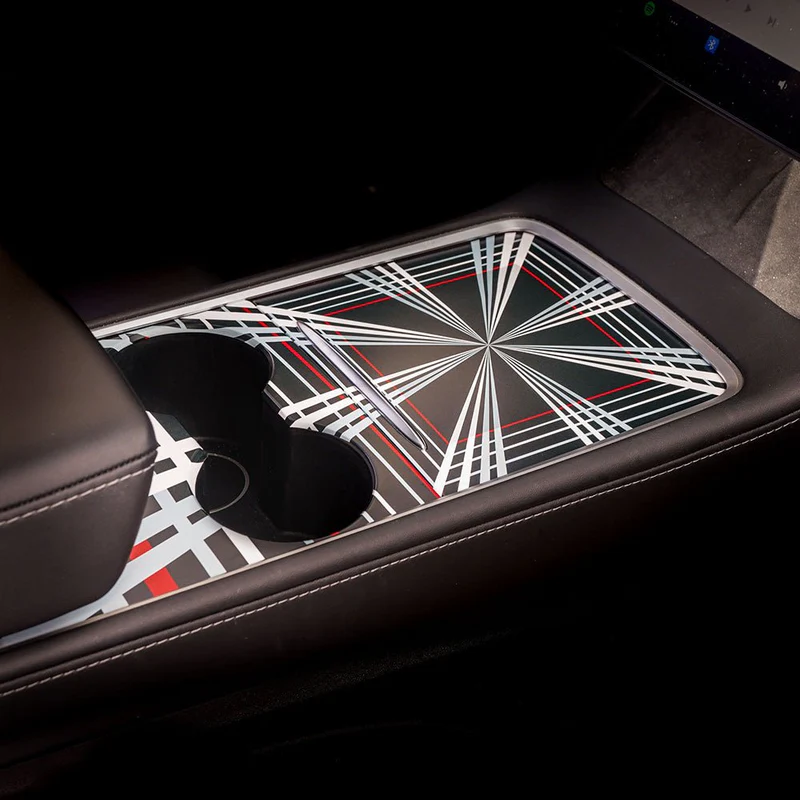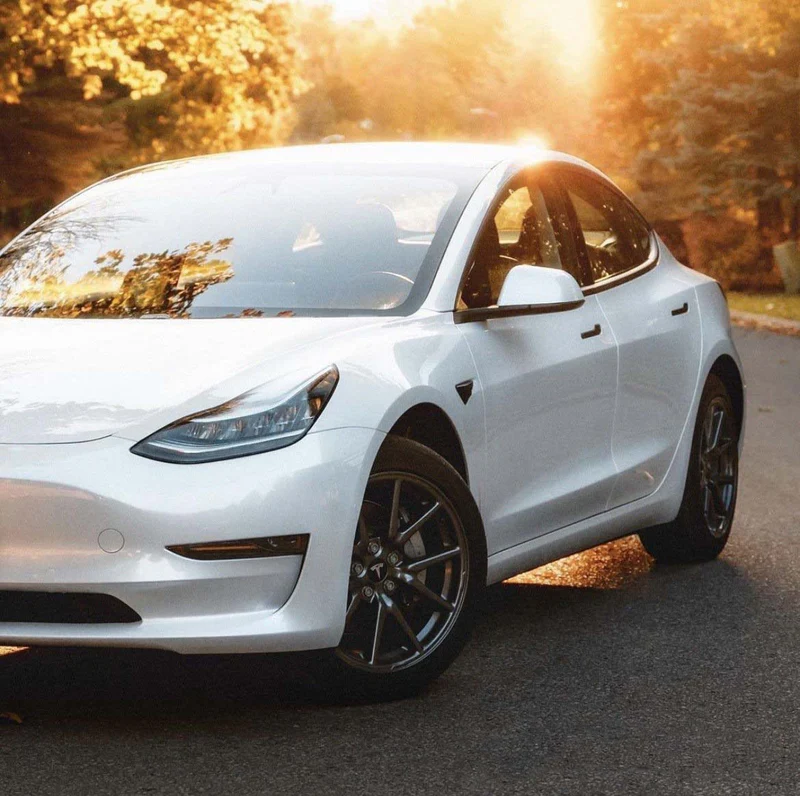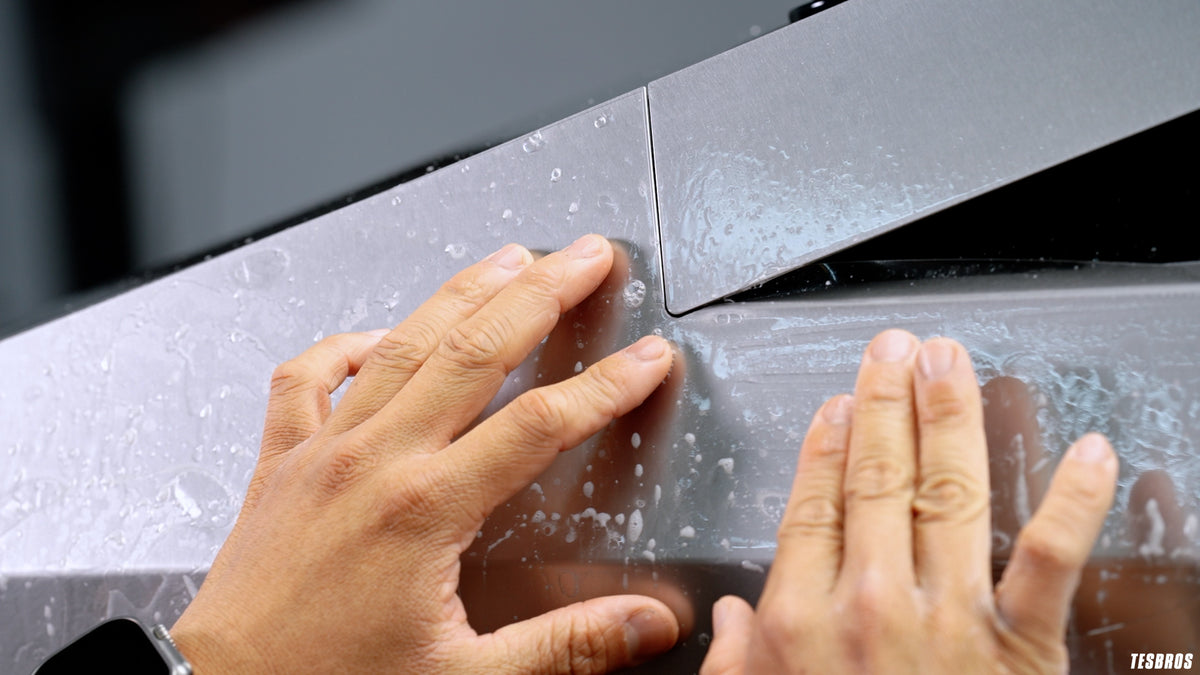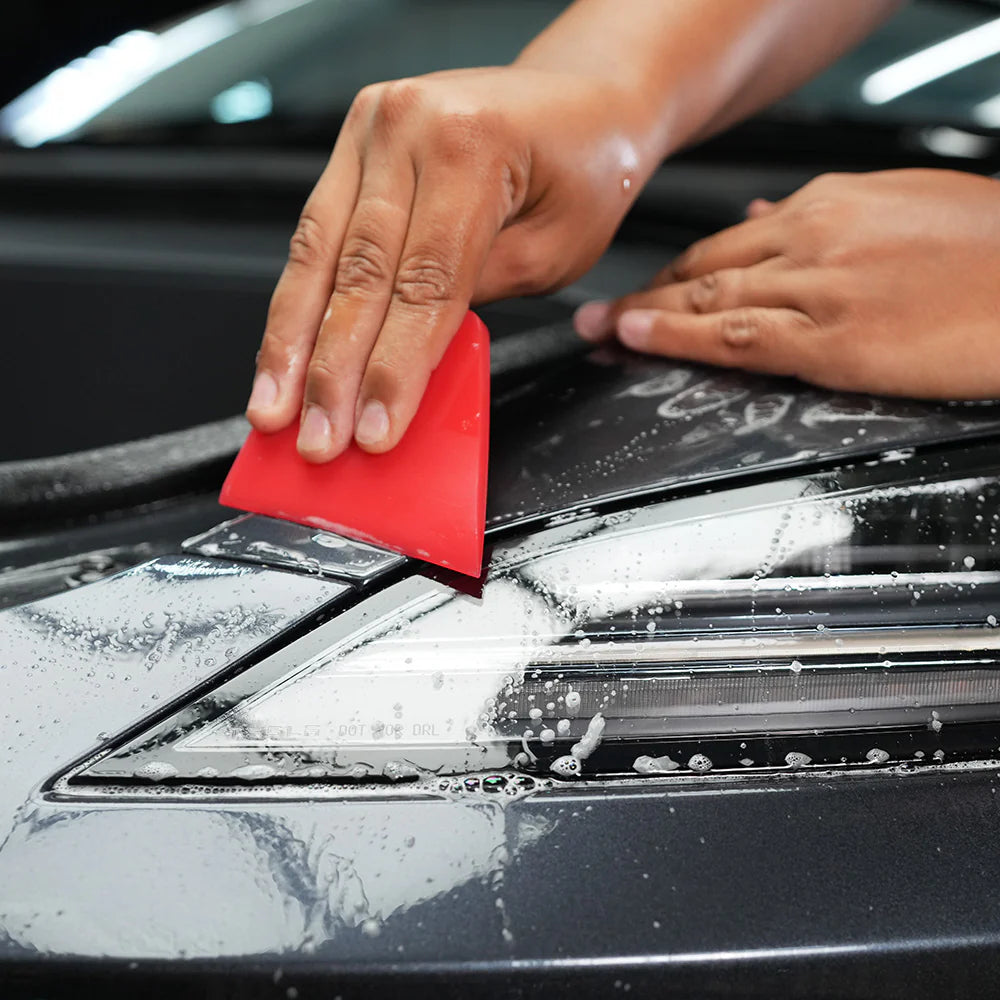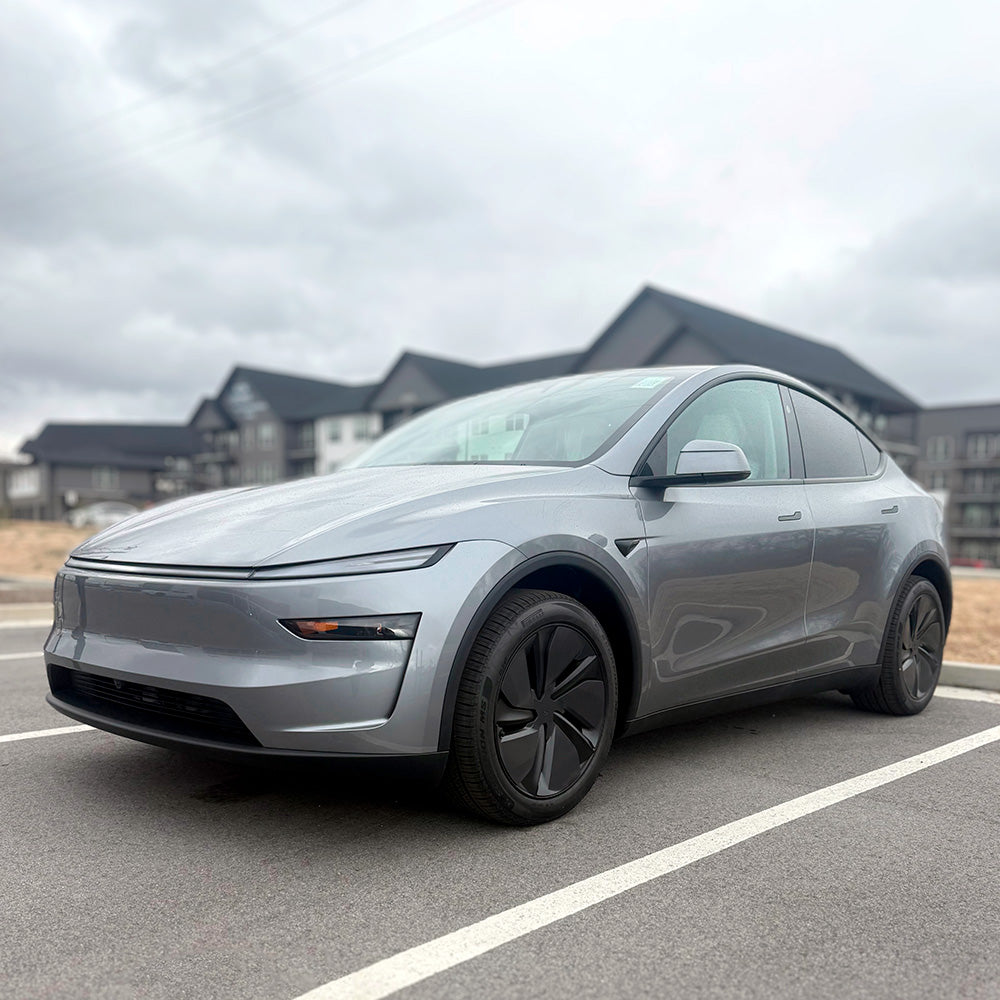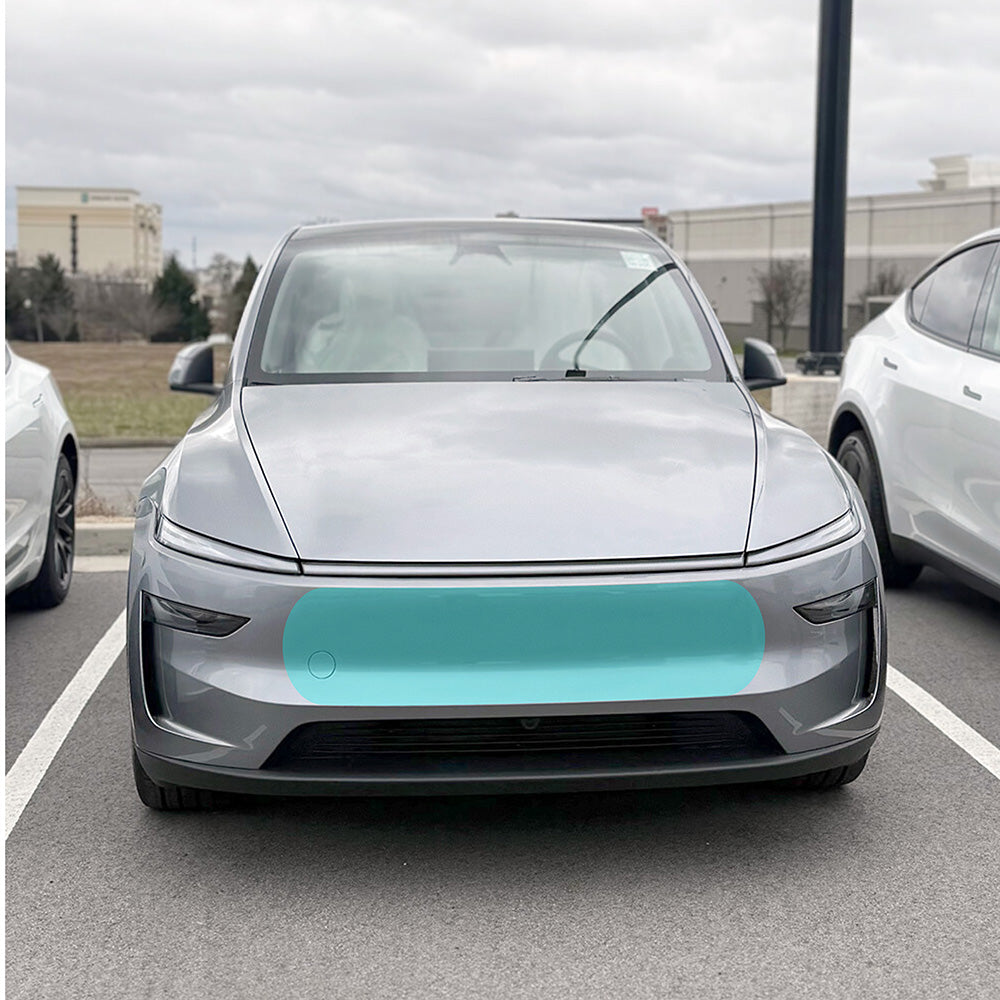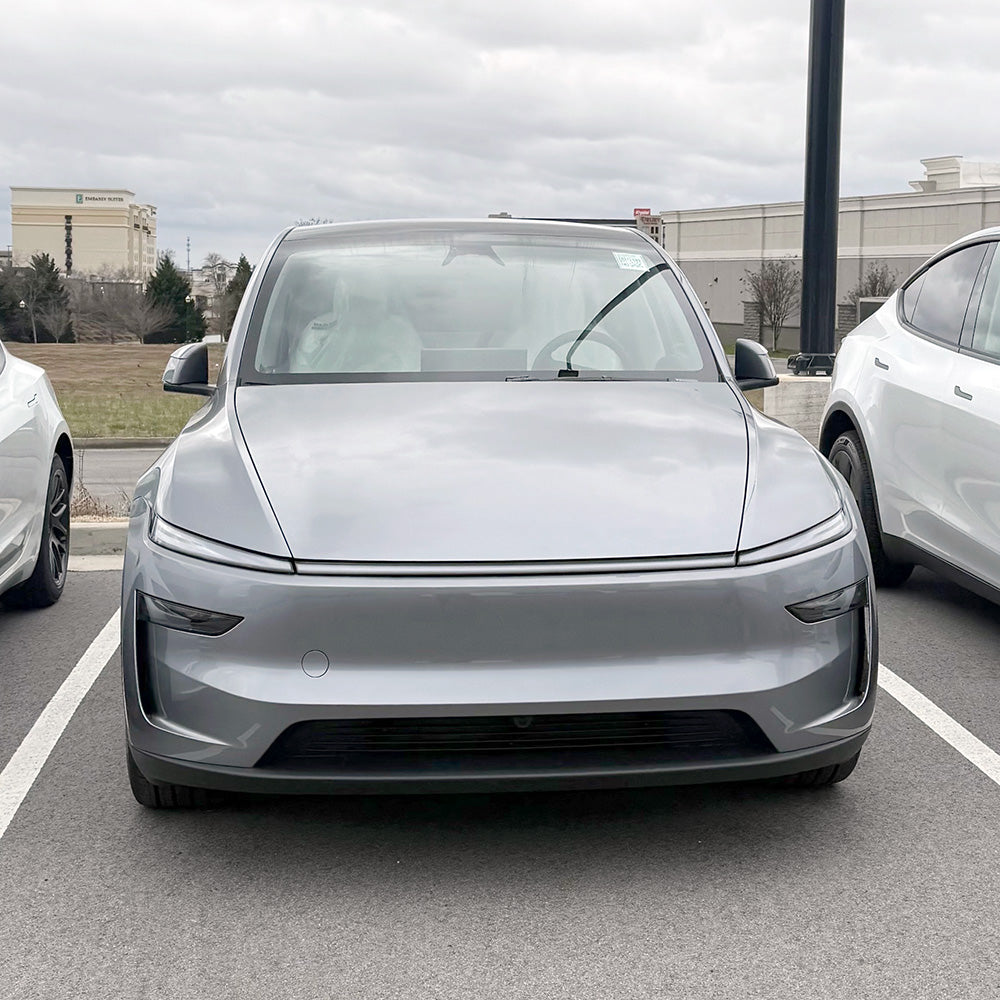Installing PPF yourself can be a rewarding experience if done methodically. Follow these steps for a smooth application:
Step 1: Prepare The Surface
Start by thoroughly washing your car to remove any dirt, dust, or grease that could interfere with the PPF’s adhesion. Use a standard car soap followed by an alcohol-based cleaner to ensure the surface is spotless. For a perfectly smooth finish, use a clay bar to eliminate any embedded contaminants. After cleaning, dry the surface completely, as moisture can compromise the film’s application.
Step 2: Apply The Solution
Prepare a soapy application solution by filling a spray bottle with water and adding a few drops of baby shampoo or a specialized PPF solution. Generously spray the solution onto the car's surface where the film will be applied. This allows the film to slide smoothly, making it easier to adjust and position before final placement.
Step 3: Position The Film
Carefully peel off the backing from the PPF to expose the adhesive side. Be cautious to avoid touching the adhesive with your hands to keep it clean. Place the film onto the wet surface, adjusting its position as needed. The soapy solution helps prevent the film from sticking prematurely, giving you time to align it correctly.
Step 4: Secure The Film
Begin smoothing the film by using a squeegee, starting from the center and working outward. This technique pushes out air bubbles and excess solution, ensuring a smooth finish.
Step 5: Inspect Your Work
Finally, inspect the applied film for any remaining air bubbles or imperfections. If you spot bubbles, gently lift the edge of the film or use a pin to release trapped air. Allow the film to cure for 24-48 hours, during which you should avoid washing the car or exposing it to heavy moisture. This curing period helps the adhesive bond fully to the surface.
Common Mistakes To Avoid During DIY PPF Installation
Even with careful planning, mistakes can happen during a DIY PPF installation. Here are some common pitfalls and how to avoid them:
Skipping Surface Preparation
One of the most critical steps is thoroughly preparing the car’s surface. Skipping this step or rushing through it can lead to poor adhesion, air bubbles, or trapped debris under the film. Always clean the surface meticulously using soap, water, and an alcohol-based cleaner, and consider using a clay bar for the smoothest finish.
Using Incorrect Application Solution
Using too little or an incorrect application solution can make it hard to position the film correctly. Without enough solution, the film might stick prematurely, making adjustments difficult. Always ensure the surface is generously sprayed with a proper solution (like water with a few drops of baby shampoo) to allow the film to glide smoothly into place.
Improper Squeegee Technique
Applying uneven pressure or rushing while using the squeegee can result in air bubbles and wrinkles. Always start from the center and work outward, using consistent, even strokes to push out air and excess solution. Use a soft-edge squeegee to avoid scratching the film.
Skipping Post-Application Care
After applying the film, neglecting the curing process can compromise its effectiveness. Avoid washing the car or exposing it to heavy moisture for at least 24-48 hours to allow the adhesive to set properly. Inspect your work carefully during this period to catch and fix any issues early.
Read Also:
